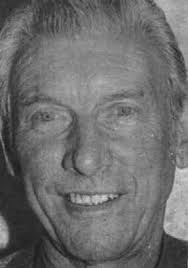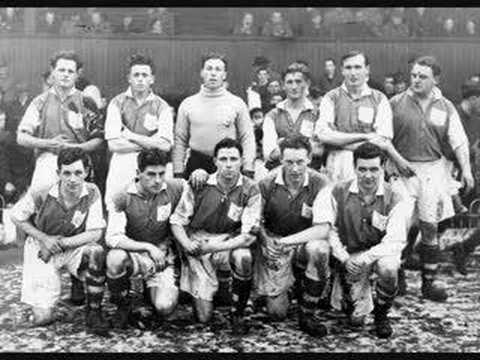 Firstly some Irish footballing history. The League of Ireland was established in 1921 in response to a perceived bias towards Belfast and Ulster teams by the Irish Football Association (IFA). Matters had come to a head in June 1921 when the IFA broke its promise of hosting the Irish Cup semi-final replay between Shelbourne and Glenavon in Dublin, instead switching it to Belfast. The new body which was set up to govern association football in Southern Ireland (the 26 counties that form the Republic of Ireland we know today) oversaw eight clubs (all from Leinster) participate in its first active season with St. James’s Gate winning a league and cup double in 1922.
Firstly some Irish footballing history. The League of Ireland was established in 1921 in response to a perceived bias towards Belfast and Ulster teams by the Irish Football Association (IFA). Matters had come to a head in June 1921 when the IFA broke its promise of hosting the Irish Cup semi-final replay between Shelbourne and Glenavon in Dublin, instead switching it to Belfast. The new body which was set up to govern association football in Southern Ireland (the 26 counties that form the Republic of Ireland we know today) oversaw eight clubs (all from Leinster) participate in its first active season with St. James’s Gate winning a league and cup double in 1922.
Over the next couple of decades the League of Ireland continued to expand and add teams from across the country: Athlone Town joined for the 1922-23 season becoming the first team from outside Dublin and Dundalk from County Louth became the first non-Dublin based champions in 1933. The 1940s was dominated by Cork United who won five league titles (including three in-a-row between 1941 and 1943) thanks to many English-based Irish professionals returning to their homeland during the Second World War.
The 1950s was considered the Golden Age of League of Ireland soccer with Dublin sides St. Patrick’s Athletic and Shamrock Rovers dominating the decade. The former Irish Times soccer correspondent Peter Byrne deemed the ‘Coad’s Colts’ side of Shamrock Rovers (named after manager Paddy Coad) to be the best of that era with four of its stars (Ronnie Nolan, Gerry Mackey, Jimmy McCann and Noel Peyton) lining up for the Republic of Ireland in the 3-0 victory over reigning world champions West Germany in 1956. The League of Ireland was supplying players to the national team while demonstrating that domestic players could compete in quality with players from bigger and more fashionable Leagues – although the newly-founded European competitions proved impenetrable for the Irish side.

Commenting on the ‘50s in his article ‘The Sliding History of the League of Ireland,’ writer Robert Redmond believes that ‘games, particularly the Dublin derbies, captured the imagination of football fans and offered a vibrant, exciting spectacle. Featuring local heroes and engaging rivalries, it offered refuge from the drudgery of an otherwise bleak era.’ Such was the demand that the first all-ticketed game in Irish domestic football took place in January 1958 at Tolka Park, and even with a generous capacity of 19,000 this proved inadequate to sate the voracious appetite of the local soccer public.
Waterford was the team of the ‘60s and won the league title four times, including three in-a-row between 1968 and 1970. Unfortunately this was also a period that brought significant decline in attendances at league games. A mixture of poor administration and lack of infrastructure development acerbated a growing malaise in the game, added to the impact of televised football that allowed Irish football supporters to keep abreast of the game in England. This was hardly a uniquely Irish issue: technological developments would similarly hamper attendances at games in England with crowds declining by three million in 1960 from the highs of a decade earlier.

Such was the stagnation that in 1972 five-time League of Ireland champions Drumcondra preferred to sell their Tolka Park ground and join the ranks of amateur football in Ireland. The League of Ireland needed some novel and innovative thinking to anticipate a better future that would reverse the malaise of the domestic game. The soccer correspondent for the Cork Examiner – Bill George – wrote a seminal 1976 article in which he vividly imagined a wholly hypothetical scenario that could raise the fortunes of the game in Ireland. His article provided a fictional account of Dutch icon Johan Cruyff signing for Limerick in 1980, a development precipitated by UEFA announcing “that they will implement the new ‘Rent-a-player’ scheme at the start of the following season with the League of Ireland to be one of the main beneficiaries.”
In the real world Barcelona might have had a thing or two to say about it, but in this fantasy scenario it has been decided that Johan Cruyff would head the list of top-class players to be rented out to League of Ireland clubs on a monthly basis.’ A figure such as Cruyff would have provided the league with great publicity and boosted its profile across world soccer greatly. Over the course of his playing career he would win eight Dutch titles and three European Cups with Ajax of Amsterdam and a La Liga title with Barcelona in Spain. The Irish Times obituary of the Dutch master in 2016 noted that ‘his philosophy and style of play made him one of the most influential figures in the history of the game.’

Other names mentioned as potential targets for rental services included Kevin Keegan, Paul Breitner, Kenny Dalglish, Cruyff’s compatriot Johnny Rep, Franz Beckenbauer and Günter Netzer. As reported by the Examiner, the objective of the ‘Rent-a-Player’ scheme was ‘an economic measure and an attempt to raise spectator interest and the playing standard in what are traditionally regarded as the weaker countries.’ These ‘weaker countries’ included Denmark, Finland, Ireland, Luxembourg, Northern Ireland and Wales ‘where the domestic league will benefit from an inability of any one club to pay the wages of these players for a full twelve months.’ This flight of fancy took some inspiration from reality when acknowledging: ‘Just as Santos undertook world tours a decade ago to help meet the wages of the great Pelé , so European clubs have had to find ways of raising money.’
Oddly, for all this article was firmly embedded in some universe far disconnected from our own, the concept of star names briefly playing for a League of Ireland club was actually starting to happen anyway on a limited basis. During the 1975/76 season Cork Celtic ran into financial difficulties and in an effort to counter their problem, the Belfast superstar and 1968 European Footballer of the Year George Best was brought in on a short-term contract (initially just for one game) in December of 1975. Even with huge crowds flooding in to watch the ageing superstar – 12,000 attended his first game at Flower Lodge against Drogheda – many were distinctly unimpressed by his waning powers and he duly departed after just three games for the Los Angeles Aztecs in the United States. Yet although he delivered little on the field, his star power helped resolve the club’s financial troubles and prolong its existence.

January 1976 saw England’s 1966 World Cup winning hat-trick hero Geoff Hurst arrive on Leeside to join Cork Celtic where he would score three goals in three games before following Best to the North American Soccer League (NASL) and Seattle Sounders. During the 1977/78 season another internationally renowned name graced Cork Celtic’s pitch: Uwe Seeler, former West German international and an opponent of Hurst in the 1966 FIFA World Cup final, had already been retired from professional football for nearly six years but lined up for Cork Celtic against Shamrock Rovers in the League of Ireland (after originally agreeing to play the game because he believed it to be a charity fixture). Individually it was a good day for the talismanic German who scored twice. Collectively it was less auspicious as Cork went down to a 6-2 defeat.
Bill George’s article unsurprisingly didn’t have the effect of invoking mass hysteria like the infamous Orson Welles’ War of the Worlds news bulletin re-interpretation of the H.G. Wells science fiction story. It didn’t even raise the interest level in the League of Ireland. However, in its fictional creation of the scenario where a player like Cruyff would dutifully turn out for a month each at Limerick, Cork Hibernian, Cork Celtic and Waterford; it did perhaps offer a route by which Irish teams could attract a higher calibre of player in relation to their training facilities.
“Special training arrangements will be made for Cruyff. He will travel by special helicopter from Dromoland to the N.C.P.E. College in Limerick three times a week to train. The facilities there are the best in Ireland and if the weather is so foul that he cannot train outdoors, then the N.C.P.E. has the indoor facilities to meet his requirements. It is hoped he will take some coaching classes, on a purely voluntary basis, while he is there. “
More League of Ireland clubs appear to be following this route such as Cork City’s links to University College Cork. It has proved very successful in relation to Rugby Union in Ireland with Munster and Leinster having strong links and bases to the University of Limerick and University College Dublin respectively. Bill George may have even been foreshadowing Cruyff’s impressive managerial career and his knowledge and approach would have been visionary and pioneering in the League of Ireland. Imagine what the Irish version of La Masia could have been in Moyross in Limerick or Mayfield in Cork!
Bill George’s imagination came a little closer to being proven prophetic a few years later. His invention of Cruyff playing in Munster appeared to be a possibility with the Irish Press reporting in October 1981 that Cork United had made a bid to secure Johan Cruyff for one of their forthcoming League of Ireland matches! Cruyff was without a club at this time but had entered into negotiations to re-join Ajax of Amsterdam. Cork dealt with an English-based agent noting ‘an encouraging response when they made their original enquiry.’
The press reported Cork director Gerry Harris as saying: “I know some people will look upon this as a gimmick, but we see our function as providing entertainment as well as football. We will continue to try and conclude a one-off deal.” No deal was ever reached (ah, but what could have been.) leaving the main legacy of Bill George’s original prophecy as extra credence to the saying ‘never let the truth get in the way of a good story.’ Sadly, the league would continue to decline and become further embittered by comments made by Eamon Dunphy when he called it a ‘chicken league’ because of a 1980s KFC sponsorship.
Robert Redmond believes the problems that inhibit the growth of the league are still: ‘Television, Manchester United and the population shift to the suburbs, in addition to the structural and administrative problems, poor facilities and fractured nature of Irish football, meaning the league has never been able to regain the mass following it once had.’ There does appear to be green shoots with the successes of Dundalk and Cork City in recent years, increased attendances and the advent of social media increasing attention to the domestic game. Yet there is still a way to go before the league could match the heights of the ‘50s or even realistically consider the possibility of a Cruyff, Messi or Ronaldo plying their trade in Ireland – even on a match-by-match basis.


